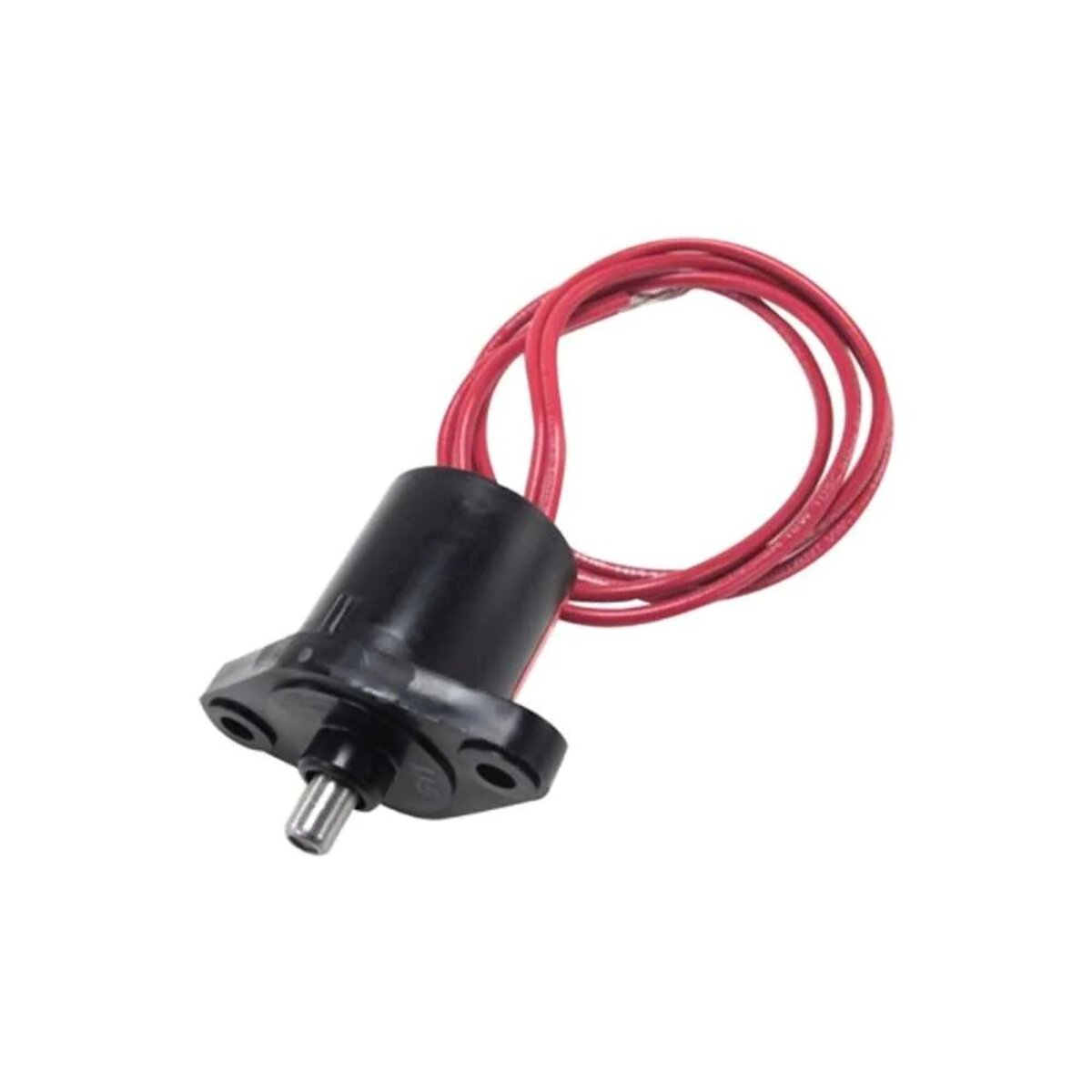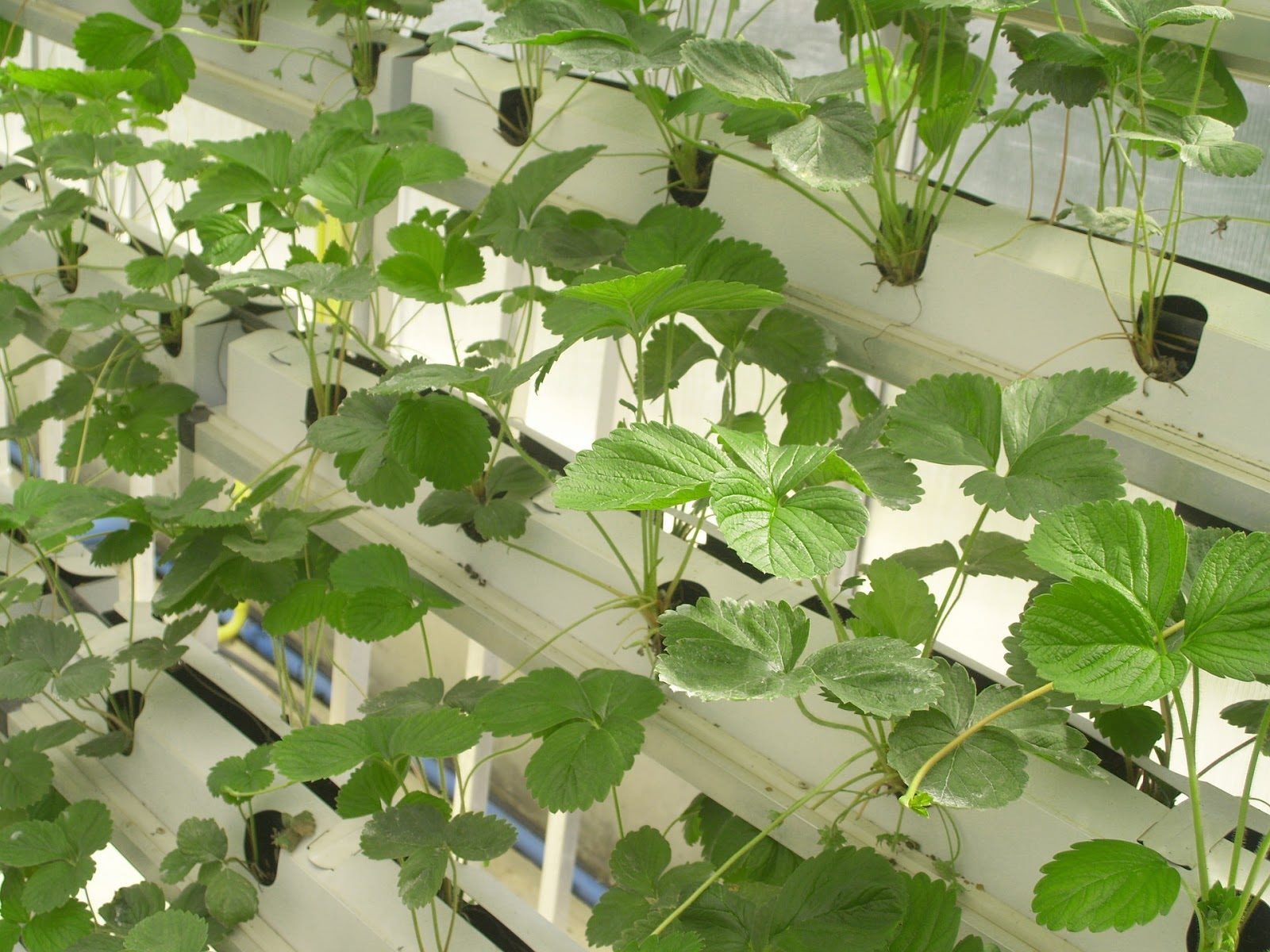Home>Gardening Tips and Tricks>Eco-Friendly Gardening>Why To Add Solenoids To Aeroponics


Eco-Friendly Gardening
Why To Add Solenoids To Aeroponics
Modified: January 22, 2024
Discover the benefits of adding solenoids to your eco-friendly gardening aeroponics system. Achieve optimal nutrient delivery and water efficiency for healthier plants.
(Many of the links in this article redirect to a specific reviewed product. Your purchase of these products through affiliate links helps to generate commission for Chicagolandgardening.com, at no extra cost. Learn more)
Table of Contents
- Introduction
- What is Aeroponics?
- Importance of Solenoids in Aeroponics
- Benefits of Adding Solenoids to Aeroponics Systems
- Key Components and Functionality of Solenoids in Aeroponics
- Installation and Integration of Solenoids in Aeroponics Setup
- Maintenance and Troubleshooting of Solenoids in Aeroponics Systems
- Case Studies: Successful Implementation of Solenoids in Aeroponics
- Conclusion
Introduction
Welcome to the world of eco-friendly gardening where sustainable practices are adopted to minimize our impact on the environment. One such practice gaining popularity is eco-friendly gardening. By focusing on solutions that promote environmental preservation and conservation, eco-friendly gardening goes beyond traditional gardening methods.
In this article, we will delve into the concept of eco-friendly gardening and explore the benefits of incorporating solenoids into aeroponics systems. Solenoids, when integrated into aeroponics setups, play a crucial role in optimizing plant growth, minimizing water consumption, and creating an efficient and sustainable gardening system.
By understanding the importance of solenoids and their functionality in aeroponics, we can unlock the potential of this innovative gardening technique and contribute to a greener and more sustainable future.
So, grab your gardening gloves and get ready to explore the world of eco-friendly gardening and the significant role that solenoids play in the aeroponics realm.
What is Aeroponics?
Aeroponics is a revolutionary gardening technique that eliminates the need for soil and utilizes a nutrient-rich mist to nourish plants. Unlike traditional gardening methods, which rely on soil as a medium for plant growth, aeroponics suspends the plant roots in the air, allowing them to absorb essential nutrients directly from the mist.
This innovative approach to gardening offers numerous advantages over traditional soil-based methods. Firstly, aeroponics allows for maximum oxygenation of the roots, resulting in accelerated growth and increased yield. Secondly, it eliminates the risk of soil-borne diseases and pests, reducing the need for harmful pesticides and herbicides. Finally, aeroponics systems use significantly less water compared to traditional methods, making it a more sustainable and water-efficient gardening technique.
Aeroponics relies on the precise delivery of the nutrient-rich mist to the plant roots, ensuring optimal nutrient absorption and growth. This is where solenoids come into play.
Solenoids are electromechanical devices that control the flow of liquids or gases in a system. In the context of aeroponics, solenoids act as valves, regulating the supply of the nutrient solution mist to the plant roots at predetermined intervals. By opening and closing the solenoid valves, the flow of mist is precisely controlled, ensuring that the plants receive the necessary nutrients without excessive waste.
Next, we will explore the importance of solenoids in aeroponics and how they contribute to the overall efficiency and success of the system.
Importance of Solenoids in Aeroponics
In the realm of aeroponics, solenoids play a vital role in maintaining precise control over the nutrient solution delivery to the plant roots. Their importance can be attributed to several key factors:
- Precision and Automation: Solenoids provide the ability to automate and regulate the nutrient mist delivery process. By opening and closing the valves based on pre-determined intervals or sensor readings, solenoids ensure that the plants receive the right amount of nutrients without human intervention. This precision eliminates the risk of under or over-watering, promoting optimal growth and yield.
- Water Efficiency: One of the significant benefits of aeroponics is its water efficiency. Solenoids further enhance this aspect by ensuring that only the required amount of mist is delivered to the plant roots. By controlling the flow of the nutrient solution, solenoids minimize wastage and contribute to sustainable water usage, making aeroponics an environmentally friendly gardening technique.
- Minimize Maintenance: With the use of solenoids, the nutrient delivery process becomes more streamlined and efficient. This, in turn, reduces the frequency of manual intervention required for maintaining the aeroponics system. By automating the nutrient mist delivery, solenoids simplify maintenance tasks and allow gardeners to focus on other aspects of plant care.
- Flexibility and Scalability: Solenoids offer flexibility and scalability to aeroponics systems. Multiple solenoid valves can be installed to control different zones within the aeroponics setup, allowing for precise nutrient delivery to specific plants or areas. This adaptability enables gardeners to customize the system based on their gardening needs and maximize the efficiency of nutrient distribution.
Incorporating solenoids into an aeroponics system is a game-changer, revolutionizing the way we approach gardening. The next section will delve into the specific benefits of adding solenoids to aeroponics systems and how they enhance the overall performance and success of the garden.
Benefits of Adding Solenoids to Aeroponics Systems
Integrating solenoids into aeroponics systems brings a plethora of benefits that contribute to the efficiency, productivity, and sustainability of your garden. Let’s explore some of the key advantages:
- Precise Nutrient Delivery: Solenoids ensure accurate and consistent nutrient delivery to plant roots. By controlling the flow of the nutrient solution, solenoids enable plants to receive the optimal amount of nutrients, promoting vigorous growth and maximizing yield.
- Water Conservation: Aeroponics systems are already known for their water efficiency, but solenoids take it a step further. These devices help regulate the misting process, minimizing water wastage by delivering the necessary amount of nutrient solution and preventing over-saturation of plant roots.
- Energy Efficiency: Solenoids operate on low voltage electricity, making them energy-efficient components in an aeroponics setup. By utilizing solenoids, the overall energy consumption of the system is reduced, contributing to a more sustainable gardening practice.
- Automation and Time-Saving: With solenoids, the nutrient misting process can be automated. Set timers or sensors can trigger the solenoids to open and close, ensuring precise nutrient delivery without constant manual intervention. This saves time and allows gardeners to focus on other aspects of plant care or even expand their gardening endeavors.
- Reduced Risk of Plant Stress: Solenoids contribute to the overall health and well-being of plants in aeroponics systems. By delivering the right amount of nutrients at the right time, they minimize stress on the plants and create an optimal growing environment, resulting in healthier and more resilient crops.
- Scalability and Customization: Solenoids offer flexibility in aeroponics systems, allowing for scalability and customization. Multiple solenoid valves can be installed to control different zones within the setup, enabling precise nutrient delivery to specific plants or areas. This adaptability allows gardeners to maximize efficiency and customize their gardening system according to their needs.
By incorporating solenoids into your aeroponics system, you harness the power of precision, efficiency, and sustainability in your gardening practice. The next section will explore the key components and functionality of solenoids in aeroponics in more detail.
Key Components and Functionality of Solenoids in Aeroponics
Solenoids are essential components in aeroponic systems, responsible for regulating the flow of nutrient solution to the plant roots. Understanding their key components and functionality is crucial to optimize the performance of your aeroponics setup.
The main components of a solenoid valve include:
- Coil: The coil is a wire wound around a magnetic core. When an electric current passes through the coil, it generates a magnetic field.
- Plunger: The plunger is a moving component that is magnetically attracted to the coil when the coil is energized.
- Valve Seat: The valve seat is the opening where the plunger fits when the solenoid is in the closed position, sealing off the flow of the nutrient solution.
- Spring: The spring is responsible for returning the plunger to its original position when the coil is de-energized, opening the valve and allowing the nutrient solution to flow.
The functionality of solenoids in aeroponics involves a simple yet effective operation:
- When the aeroponics system is ready to deliver the nutrient mist to the plant roots, an electric current is sent to the coil of the solenoid valve.
- The electric current creates a magnetic field, attracting the plunger towards the coil and closing the valve seat. This prevents the nutrient solution from flowing.
- As the plunger closes the valve seat, it creates a sealed chamber where the pressure of the nutrient solution builds up.
- When the desired interval or sensor reading is reached, the electric current to the coil is interrupted, de-energizing the solenoid.
- The spring in the solenoid pushes the plunger back to its original position, opening the valve seat and allowing the nutrient solution to flow through the valve.
- The nutrient mist is then delivered to the plant roots until the next cycle is triggered.
By controlling the energization and de-energization of the solenoids, the flow of the nutrient solution is accurately regulated, ensuring precise nutrient delivery to the plant roots in an aeroponics system.
Now that we understand the key components and functionality of solenoids in aeroponics, we’ll delve into the installation and integration process in the next section.
Installation and Integration of Solenoids in Aeroponics Setup
Installing and integrating solenoids into your aeroponics setup requires careful planning and attention to detail to ensure seamless operation. Here are the key steps to follow:
- Determine the Number of Solenoids: Assess your aeroponics system and determine how many solenoids you need to control the flow of nutrient solution to different zones or sections of the setup. This will depend on the size of your garden and the number of plants you are cultivating.
- Select the Right Solenoids: Choose solenoids that are suitable for use in aeroponic systems. Look for solenoids that are designed for water or nutrient solution applications and offer reliable performance and durability.
- Position the Solenoids: Identify the optimal locations for installing the solenoids. Ensure easy access for installation, maintenance, and troubleshooting. Consider factors such as proximity to the plants, convenience of wiring, and efficient nutrient solution delivery.
- Connect the Solenoids: Connect the solenoids to the main water or nutrient supply line of your aeroponics system. Use appropriate fittings and connectors to ensure a secure and leak-proof connection.
- Integrate with Control System: If you have an automated control system for your aeroponics setup, integrate the solenoids with it. This may involve connecting the solenoids to timers, sensors, or a programmable controller to regulate the opening and closing of the valves based on predetermined intervals or sensor readings.
- Test and Calibrate: After installing the solenoids, thoroughly test the functionality of each valve. Ensure that they open and close as intended and that the nutrient solution delivery is accurate. Calibrate any timers or sensors to ensure precise nutrient delivery to the plant roots.
Proper installation and integration of solenoids in your aeroponics setup will enable efficient control of nutrient solution flow, leading to optimal plant growth and productivity. Regularly inspect and maintain the solenoids to prevent any issues that may affect their performance.
In the next section, we will explore maintenance and troubleshooting tips to help you keep your solenoids and aeroponics system in top condition.
Maintenance and Troubleshooting of Solenoids in Aeroponics Systems
Regular maintenance and troubleshooting of solenoids in your aeroponics system are essential for optimal performance and longevity. By following these maintenance tips and troubleshooting guidelines, you can ensure that your solenoids continue to function efficiently:
- Regular Cleaning: Over time, debris and mineral deposits may accumulate in the solenoid valves, affecting their proper functioning. Clean the solenoids periodically by removing them from the system and gently rinsing them with water. Be cautious not to damage any delicate components during the cleaning process.
- Inspect for Leaks: Check the solenoid valves and their connections for any signs of leaks. Leaks can result in water or nutrient solution wastage and affect the accuracy of nutrient delivery. Replace any damaged or worn-out fittings or seals to ensure a secure and leak-free connection.
- Monitor Valve Performance: Regularly observe the opening and closing of the solenoid valves during their operation. Ensure that they open and close smoothly and without any delay. If you notice any abnormal behavior, inspect the valves for any obstructions or mechanical issues that may be causing the problem. Clean or replace damaged components as necessary.
- Check Wiring Connections: Inspect the wiring connections of the solenoids to ensure they are secure and free from corrosion or damage. Loose or corroded connections can disrupt the electrical current flow and affect the operation of the solenoids. Tighten any loose connections and consider using waterproof connectors for added protection.
- Monitor Power Supply: Ensure that the power supply to the solenoids is stable and consistent. Fluctuations in power can affect the solenoids’ performance and cause issues such as inconsistent nutrient delivery. Use surge protectors or voltage stabilizers if necessary.
- Troubleshooting: If you encounter any issues with the solenoids, such as valves not opening or closing correctly, start by checking the power supply and wiring connections. Inspect the valves for any mechanical blockages or damage. If the issue persists, consult the manufacturer’s manual or seek professional help to troubleshoot and resolve the problem.
By regularly maintaining and troubleshooting your solenoids, you can ensure their optimal performance and extend their lifespan. These simple steps will help you avoid common issues and keep your aeroponics system operating smoothly.
In the next section, we will explore real-life case studies where solenoids have been successfully implemented in aeroponics systems, showcasing their effectiveness and benefits.
Case Studies: Successful Implementation of Solenoids in Aeroponics
Real-life case studies demonstrate the successful implementation of solenoids in aeroponics systems, highlighting their effectiveness and the benefits they bring. Let’s explore a few examples:
- Urban Rooftop Garden: In a bustling city environment, space is limited. An urban rooftop garden integrated solenoids into their aeroponics system to regulate the misting process effectively. By automating the nutrient delivery with solenoids, the gardeners were able to focus on other aspects of plant care, resulting in increased productivity and a thriving garden.
- Commercial Hydroponic Farm: A large-scale commercial hydroponic farm implemented solenoids in their aeroponics setup to ensure precise nutrient delivery across different crop varieties. By customizing the nutrient misting cycles for each crop using multiple solenoid valves, they achieved optimal growth and consistent yields throughout the farm.
- Community Greenhouse: A community greenhouse project incorporated solenoids into their aeroponics system to conserve water and reduce maintenance efforts. By using solenoids to control the nutrient misting intervals, they significantly reduced water consumption and achieved sustainable gardening practices, inspiring the community to adopt eco-friendly gardening methods.
These case studies exemplify the versatility and effectiveness of solenoids in aeroponics. Implementing solenoids not only improved the efficiency and productivity of the gardens but also contributed to water conservation and sustainability.
Now that we have explored the successful implementation of solenoids in aeroponics, let’s summarize the key insights and conclude our discussion.
Conclusion
Eco-friendly gardening is a growing trend, and incorporating solenoids into aeroponics systems is a powerful way to maximize the efficiency, productivity, and sustainability of your garden. Solenoids play a crucial role in regulating the flow of nutrient solution to plant roots, ensuring precise delivery and minimizing water consumption.
By adding solenoids to your aeroponics setup, you can reap a multitude of benefits. The precise nutrient delivery promotes optimal plant growth and higher yields, while the water efficiency minimizes waste and contributes to sustainable gardening practices. Solenoids also offer automation, saving time and effort in maintaining the system. The flexibility and scalability of solenoids allow for customization to suit your specific gardening needs.
Installation and integration of solenoids require careful planning, proper positioning, and integration with a control system. Regular maintenance and troubleshooting will ensure the long-lasting performance of the solenoids in your aeroponics system.
Real-life case studies demonstrate the successful implementation of solenoids in aeroponics, showcasing how they enhance the efficiency and productivity of various gardening projects. From urban rooftop gardens to commercial farms and community greenhouses, solenoids have proven to be a valuable addition.
Incorporating solenoids into your aeroponics system is not only a smart choice for your garden’s success but also a step towards a more sustainable and eco-friendly approach to gardening.
So, harness the power of solenoids and unlock the potential of aeroponics for greener, more efficient, and productive gardening. Embrace eco-friendly practices, conserve water, and contribute to a healthier planet through the integration of solenoids in your eco-friendly gardening journey.



